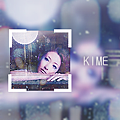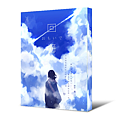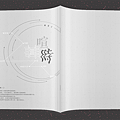
#3(2)

I am Kimekou

KIME

公用#2ZHEYU

日常 筆刷

自製頭貼1

自製頭貼2

48487524_p1_master1200 2+字 調色

未有遺響

Angel&Master 刊

Angel&Master 刊2

A

A2

設計。境界3

歸零的記憶

獸咒2

Angel

死神的血色夜語

原來是愛情

原來是愛情2

時光,回憶3

時光,回憶2

低音

渺無物語

團練日記

人類思維的控制遊戲2 550

千本櫻550

神隱x意像

立入禁止550

中秋賀卡

40024701

2k活動刊版

971511_333086703490293_38835749_n

發廚+字

發廚

BH練習2

淡

1(2)+字

1(2)

絢爛的反面

黑草阿哲

黑草阿哲+框

墜落1

規則

分

分3

FB_IMG_1436670055415

1441547228-2642918281

草履蟲黑板

遠望-教學

繽紛

繽紛

繽紛 Push

破九千

破九千2

教學刊 柔

茉莉綠茶 立體

彼岸的約定 立體

天堂之路

天堂之路2

白與灰藍 立體

白與灰藍

回憶 立體

回憶

而我逆著光 立體

而我逆著光2

流星雨2

第二世界

第二世界2

隱霧伯爵2 紅

隱霧伯爵2 藍

東京之旅

人氣破萬

老少女

時程表1

IMG_20160820_121939

未命名-邊緣人

橫幅

喧囂時 展示1

喧囂時 展示2
相片最新留言
此相簿內的相片目前沒有留言
此相簿內的相片出現在:
相簿列表資訊
- 最新上傳:
- 2018/08/25
- 全站分類:
- 創作設計
- 本日人氣:
- 0
- 累積人氣:
- 745




讚喔!極光大真的很有才華喔!
Solving a long-standing mystery about the desert’s rock art canvas
Petroglyphs are carved in a material called rock varnish, the origins of which have been debated for years. Now, scientists argue it’s the result of bacteria and an adaptation that protects them from the desert sun’s harsh rays.
By Nathan Collins
5923141600_1bc3f25867_k.jpg
Rock art featuring human and animal forms and handprints
Petroglyphs at Mesa Verde National Park, Colorado (Christine Fry & Peter Russo)
Wander around a desert most anywhere in the world, and eventually you’ll notice dark-stained rocks, especially where the sun shines most brightly and water trickles down or dew gathers. In some spots, if you’re lucky, you might stumble upon ancient art – petroglyphs – carved into the stain. For years, however, researchers have understood more about the petroglyphs than the mysterious dark stain, called rock varnish, in which they were drawn.
In particular, science has yet to come to a conclusion about where rock varnish, which is unusually rich in manganese, comes from.
Now, scientists at the California Institute of Technology, the Department of Energy’s SLAC National Accelerator Laboratory and elsewhere think they have an answer. According to a recent paper in Proceedings of the National Academy of Sciences, rock varnish is left behind by microbial communities that use manganese to defend against the punishing desert sun.
The mystery of rock varnish is old, said Usha Lingappa, a graduate student at Caltech and the study’s lead author. “Charles Darwin wrote about it, Alexander von Humboldt wrote about it,” she said, and there is a long-standing debate about whether it has a biological or inorganic origin.
But, Lingappa said, she and her colleagues didn’t actually set out to understand where rock varnish comes from. Instead, they were interested in how microbial ecosystems in the desert interact with rock varnish. To do so, they deployed as many techniques as they could come up with: DNA sequencing, mineralogical analyses, electron microscopy, and – aided by Stanford Synchroton Radiation Lightsource (SSRL) scientist Samuel Webb – advanced X-ray spectroscopy methods that could map different kinds of manganese and other elements within samples of rock varnish.
“By combining these different perspectives, maybe we could draw a picture of this ecosystem and understand it in new ways,” Lingappa said. “That’s where we started, and then we just stumbled into this hypothesis” for rock varnish formation.
Among the team’s key observations was that, while manganese in desert dust is usually in particle form, it was deposited in more continuous layers in varnish, a fact revealed by X-ray spectroscopy methods at SSRL that can tell not only what chemical compounds make up a sample but also how they are distributed, on a microscopic scale, throughout the sample.
That same analysis showed that the kinds of manganese compounds in varnish were the result of ongoing chemical cycles, rather than being left out in the sun for millennia. That information, combined with the prevalence of bacteria called Chroococcidiopsis that use manganese to combat the oxidative effects of the harsh desert sun, led Lingappa and her team to conclude that rock varnish was left behind by those bacteria.
For his part, Webb said that he always enjoys a manganese project – “I’ve been a mangaphile for a while now” – and that this project arrived at the perfect time, given advances in X-ray spectroscopy at SSRL. Improvements in X-ray beam size allowed the researchers to get a finer-grained picture of rock varnish, he said, and other improvements ensured that they could get a good look at their samples without the risk of damaging them. “We’re always tinkering and fine-tuning things, and I think it was the right time for a project that maybe 5 or 10 years ago wouldn’t really have been feasible.”
The research was supported by the National Science Foundation, the National Institutes of Health and the National Aeronautics and Space Administration. SSRL is a DOE Office of Science user facility.
Citation: Usha F. Lingappa et al., Proceedings of the National Academy of Sciences, 22 June 2021 (10.1073/pnas.2025188118)
For questions or comments, contact the SLAC Office of Communications at communicationsPhil Lai .stanford.edu.
SLAC is a vibrant multiprogram laboratory that explores how the universe works at the biggest, smallest and fastest scales and invents powerful tools used by scientists around the globe. With research spanning particle physics, astrophysics and cosmology, materials, chemistry, bio- and energy sciences and scientific computing, we help solve real-world problems and advance the interests of the nation.
SLAC is operated by Stanford University for the U.S. Department of Energy’s Office of Science. The Office of Science is the single largest supporter of basic research in the physical sciences in the United States and is working to address some of the most pressing challenges of our time.
X-ray Science
X-ray Spectroscopy
Stanford Synchrotron Radiation Lightsource (SSRL)